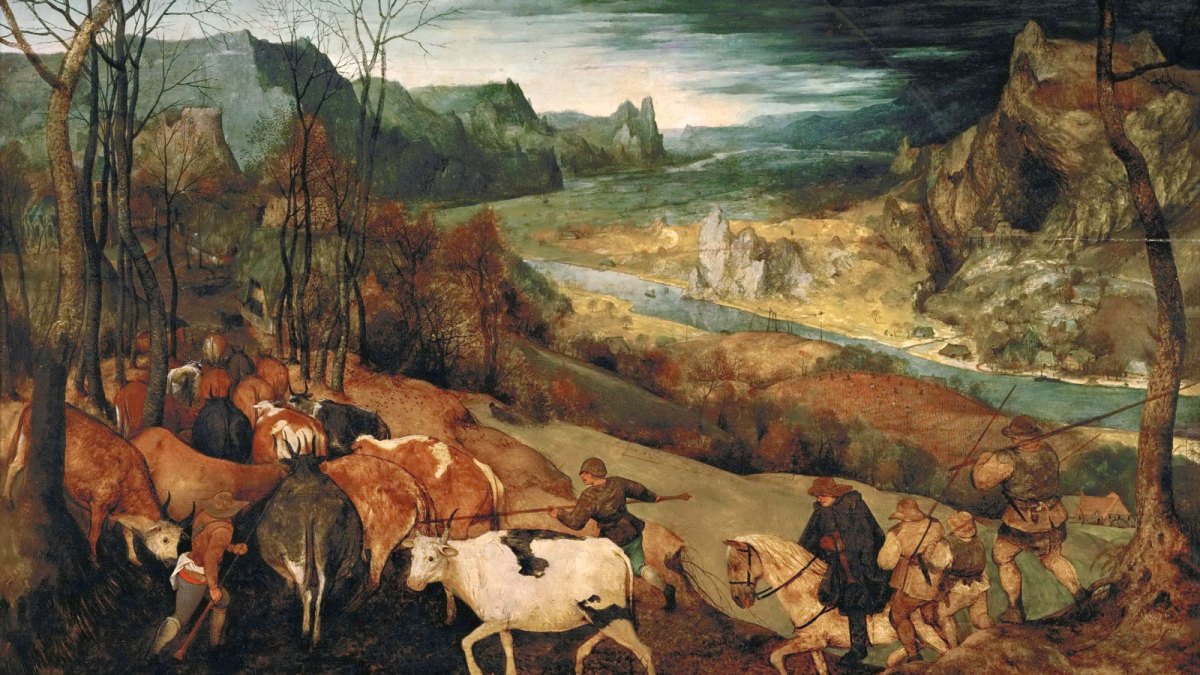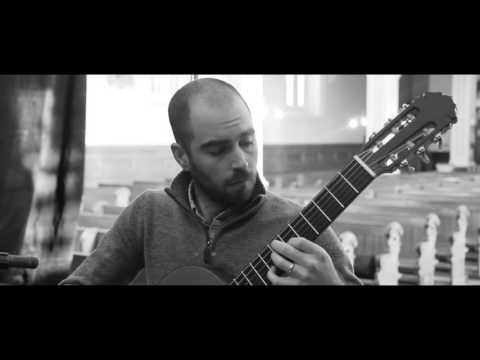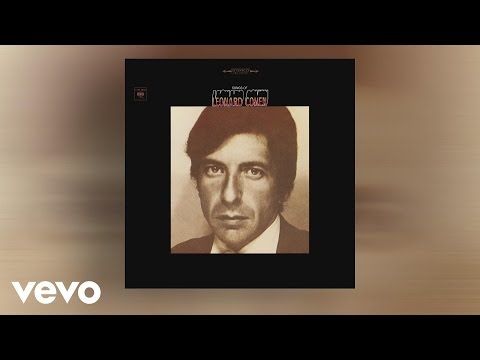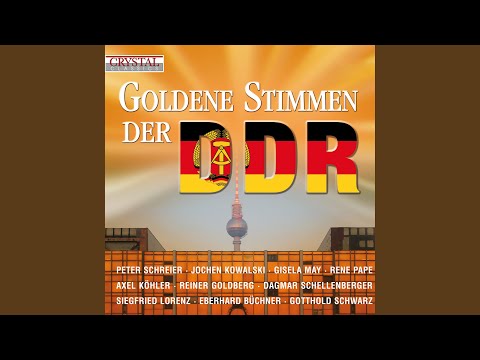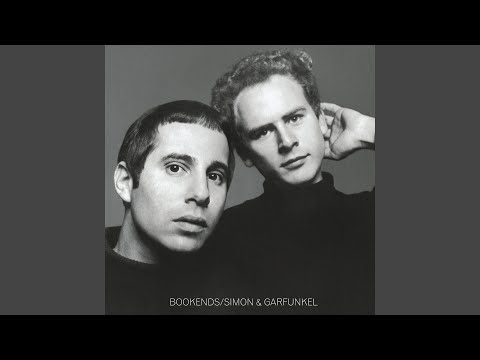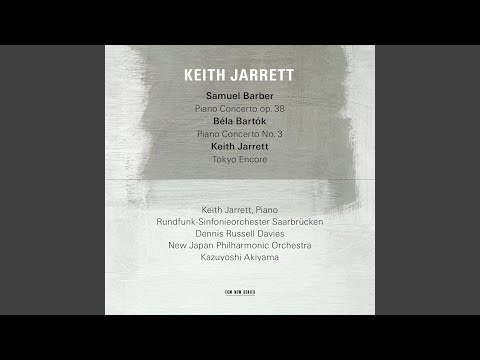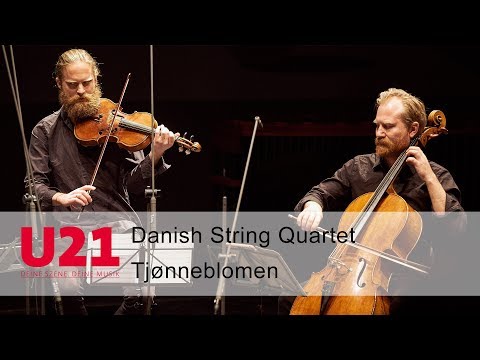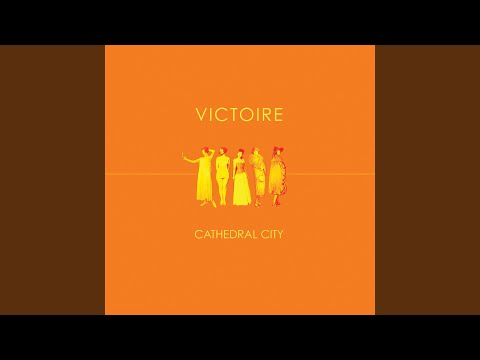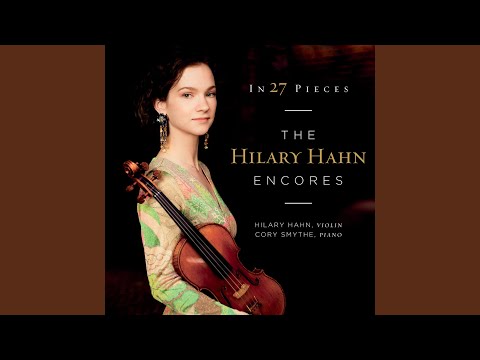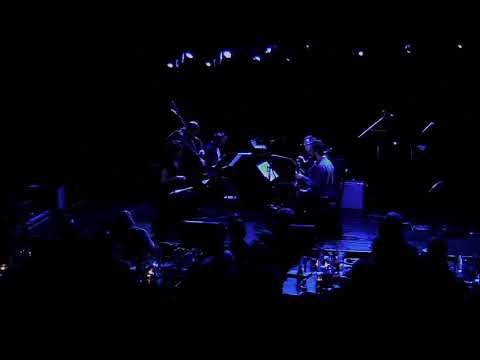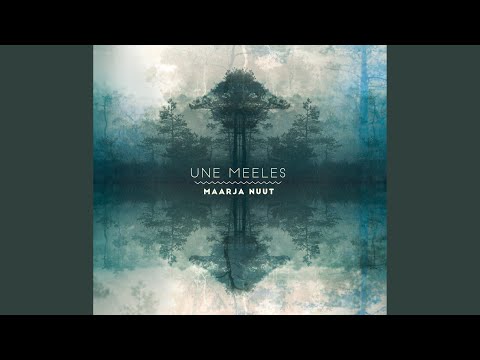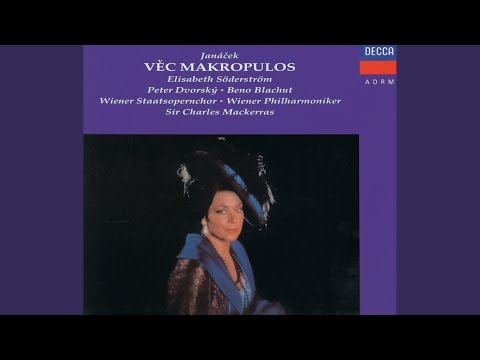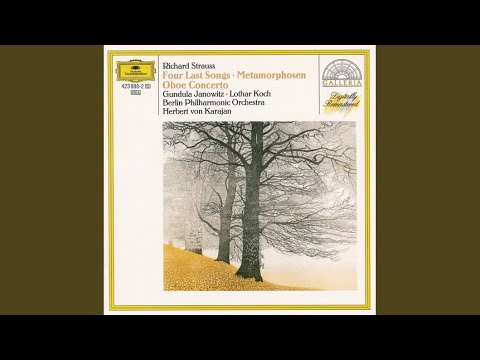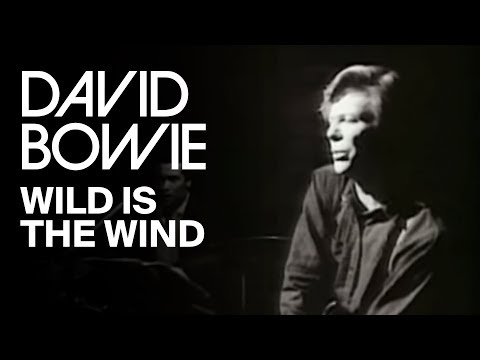I’m not here to shit all over Vivaldi’s “Four Seasons,” but I do believe that the Venn Diagram between people who consider the composer’s “Autumn” to be the epitome of fall-inspired classical music and people whose image of autumn stops at Pumpkin Spice Lattes and rewatches of “Hocus Pocus” is a circle.
On the eve of this year’s Autumn Equinox, this playlist serves as a reprieve from decorative gourd season and instead gets to the sonic heart of the time of year: rough-hewn, windswept, with more than a little folk influence.
Philippe Sly, John Charles Britton, Franz Schubert: “Ständchen” (1828)
The obvious choice for Schubert on an autumn classical playlist would be the composer’s “Herbst” (D.945), which sits high on VAN’s ranking of every Schubert song. But my personal pick for music in which you can hear the leaves turn from green to brown is this even-more-famous chestnut from “Schwanengesang.” What other season would give Ludwig Rellstab’s “slender treetops” the breeze they need to “whisper and rustle in the moonlight”? What other season would match the velveteen melancholy of Schubert’s narrator? Baritone Philippe Sly furthers this argument in his recording of the work, which trades traditional piano for guitarist John Charles Britton’s sparsely elegant accompaniment.
Leonard Cohen: “Suzanne” (1967)
Sly and Britton’s arrangement of Schubert highlights the common thread running from early-19th-century Romantic lieder to mid-20th-century folk music (a connection further legitimized by Bob Dylan’s win of the 2016 Nobel Prize in Literature). But when it comes to the tender-hearted desire of Schubert, it’s hard not to think of the early ballads of Leonard Cohen. “Suzanne,” the first track of his self-titled debut album, is like “An Sylvia” after spending the summer in a Zen monastery; an ode to an idealized woman. But its combination of austere, repetitive melody and balmy, evocative lyrics, sung in Cohen’s melancholy monotone, is pure “Schwanengesang.”
Richard Wagner: “Morgenlich leuchtend in rosigem Schein” from “Die Meistersinger von Nürnberg” (1867)
“Meistersinger” may be set during Midsummer (which begs for an Ari-Aster-ified concept as its new Bayreuth staging), but Walther’s prize-winning song captures those first slow sunrises after daylight savings time ends. This rings especially true in tenor Reiner Goldberg’s recording, his voice straddling the divide between summery warmth and autumnal glow, while Siegfried Kurz and the Staatskapelle Berlin highlight a similar juxtaposition between the clarion call of the woodwinds and gentle thrum of the strings.
Simon & Garfunkel: “Save the Life of My Child” (1968)
Trust me on this one: Play this track just after “Morgenlich” to hear the same chord that opens and closes Wagner’s aria replicated by a distorted Moog synthesizer. An early salvo on Simon and Garfunkel’s “Bookends” captures the early—at times Wagnerian—rage of youth in an album that courses through the seasons of a nameless hero’s life. While it’s set in the spring of youth, its patina speaks to the serotinal void of shorter days and longer nights.
The latest from VAN, delivered straight to your inbox
Béla Bartók: Piano Concerto No. 3 (1945)
Bartók first encountered the autumn of his life during his final years in Hungary. It was in 1940 that Béla Bartók, Jr. said the early symptoms of his father’s leukemia became unavoidable. In 1943, settled in New York, the composer wrote to his publisher at Boosey & Hawkes: “I can hardly play the piano, there is a pain in my right shoulder.” One year later, his leukemia would be diagnosed in its late stage. Less than 18 months later, he was dead.
In his final year, Bartók began working on his Third Piano Concerto, one of the many works that came in the wake of his declining health and fatal prognosis. Famously, he intended this particular piece as a surprise birthday gift for his wife, pianist Ditta Pásztory, with the idea that she could use the work to further her career following his death. The opening movement flutters in like a breeze, the piano capturing and diffusing sunlight in the main melody (which borrows from the composer’s beloved Hungarian folk dances). There are other classic Bartókisms, including birdsong, night music, and quotes from Beethoven’s late string quartets and Wagner’s “Tristan und Isolde.”
The overall effect feels on par with Pieter Bruegel the Elder’s depiction of autumn in “The Return of the Herd,” both in terms of the tonal colors throughout the score and in the sense of homecoming. Bruegel was showing the return of cattle from Alpine pastures to peasant farms in preparation for winter. Bartók’s musical influences make a similar journey. Or, as Nate Chinen wrote of pianist Keith Jarrett’s retirement from music in 2020 (following a pair of strokes in 2018), Bartók is coming “to terms with his body of work as a settled fact.” This added poignancy comes to the surface in Jarrett’s galvanizing recording of the Third Concerto, recorded live in Tokyo in 1985 and released 30 years later on ECM.
Gjermund Haugen, arr. Danish String Quartet: “Tjønneblomen” (2017)
The video promo for the Danish String Quartet’s “Last Leaf” is like a vintage Barbour catalog come to life: wooly sweaters, fresh logs thrown on a fire, weathered red cabins, and an adorable yellow lab. That may sound cliché, but the entire album is—much like those of Simon and Garfunkel—the sort that warrants more playtime as the season turns cooler and stands on its own merits. Known for technically brilliant and psychologically-probing readings of Beethoven, Bartók, and Berg, here the Danes luxuriate in Nordic folk music. It’s a form that they acknowledge was written for more utilitarian purposes and requires a different playing style, but it utterly suits the warmth of the Quartet’s tone and their sense of camaraderie. One highlight is 20th-century Norwegian fiddler Gjermund Haugen’s tune “Tjønneblomen” (“The Water Lily”), which reels around itself in a foot-stomping waltz full of lyricism and introspection.
Arthur Russell: “Come to Life” (1976)
A cellist from Iowa with one foot in the world of disco and the other in the downtown avant-garde, Arthur Russell seemed fated to obscurity following his AIDS-related death in 1992 at the age of 40. Much like Julius Eastman, however, his posthumous renaissance has brought to light the range and depth of his musicianship and influence across genres. Grizzly Bear producer and musician Chris Taylor was responsible for resurfacing this particular song, which Russell recorded with an unknown female vocalist in 1976 (an era in which Russell also worked with Eastman). There are blips of disco-like orchestration in this tune, combined with the unadorned folkishness of the vocals, which sound wispy and unfinished—as if both singers are marking.
Missy Mazzoli: “A Song for Arthur Russell” (2008)
While “Come to Life” was released after Missy Mazzoli wrote this tribute to Russell, you can hear its rhythms refracted through electronic lines in this gem written for Mazzoli’s chamber ensemble, Victoire. Violinist Olivia de Prato captures the feel of Rusell’s folk era in low, cello-ish lines. William Brittelle’s vocal loops have the breathy wispiness of Russell and his unnamed female duet partner.
David Lang: “Light Moving” (2012)
Light moves differently in autumn; the slow burn of summer afternoons becomes increasingly distilled and concentrated. There’s a bit of this propulsion in Lang’s “Light Moving,” although the name strikes more of a chord with two of Arthur Russell’s other colleagues and collaborators: In the early days of their careers, Steve Reich and Philip Glass worked for sculptor Richard Serra’s moving company, Low Rate Movers. (Their coworkers also included Chuck Close and Spalding Gray.)
Reich and Glass soon broke off and began their own operation, Chelsea Light Moving. Through the momentum of the violin lines—here performed by Hilary Hahn, who commissioned the work as part of her “Encores” Project—Lang captures both the natural phenomenon of sunlight and the man-made machinations and choreography of the Manhattan neighborhood.
Judd Greenstein: “Folk Music” (2004)
For Americans, the fall season is inextricably linked to New England: apple orchards, the turning of the leaves, LL Bean… In one of his early works, Judd Greenstein pays tribute to his childhood spent in the Berkshire hamlet of Lenox, Massachusetts (home to Tanglewood), an experience he describes as being “colored with a deep sense of nostalgia and an overwhelming feeling of arrival and belonging.” That carries over into the honeyed and sepia-hued tones of NOW Ensemble’s performance, particularly in the flute taking over for Greenstein’s originally-scored violin and an electric bass playing at its upper ranges. Without directly quoting songs from the American folk songbook, Greenstein captures their feeling in an easy exchange between musicians, steady rhythm, and emotional lilts between contentment and contemplation. Perfect for long drives along the Taconic and romanticizing your life as a Wes Anderson film.
Maarja Nuut: “Hobusemäng” (2016)
Much like Bartók or Janáček, Estonian violinist Maarja Nuut has an ethnomusicologist’s sensibility for the folk music of her home country. One of these tunes (which translates from the Estonian into “Horse Game”) is based on a children’s game which Nuut describes as such: A horse is lost. Its owner searches the village without success, until someone tells him that the horse has gotten loose in a buckwheat field, eating the farmer’s cabbage, “doing all sorts of naughty stuff.” Then “a wolf is invited to break the horse’s neck.” If the wolf succeeds, all is well and we’re spared more of the horse’s destruction.
As spooky as a childhood spent in New England could get around this time of year, it will never be Estonia and we all have to live with that. In the meantime, Nuut’s infinite loops of violin and voice—capturing everything including the clop of horse’s hooves on pavement—is like a modernist “Erlkönig.” Except with more wolves.
Leoš Janáček: Prelude to “The Makropulos Case” (1925)
The driving momentum of Nuut’s “Hobusemäng” has roots in fellow folklorist Leoš Janáček’s overture to “The Makropulos Case,” which barrels out of the gate in galloping, percussive motions. While this is one of the rare works of Janáček to completely eschew Moravian folk themes, there’s no music more fitting for a late-September thunderstorm—the final days of summer refusing to cede territory to the fall—than this overture to a Faustian story of holding on to youth and the inevitability of death.
Richard Strauss: “September” (1948)
One of Strauss’s greatest talents as a composer was composing music for fading empires: “Salome” is as much about the tenuousness of Herod’s political power as it is about the beheading of John the Baptist. The nostalgia for fin-su-siècle Vienna in “Der Rosenkavalier” takes on added context when you consider that World War I broke out three years after the work’s premiere. The end suggested in the composer’s “Four Last Songs” is less epic and more personal, but nevertheless emotionally rich. “It aches with love for a life that is quietly fading,” David Bowie said of the cycle in a 2003 interview in Vanity Fair. It’s hard not to get caught in the sentimental undertow of “September,” which shimmers through a haze of woodwind lines that blend with the texture of the soprano soloist. As transcendentally beautiful as it sounds, however, the meaning of the work is spelled out in its texts: “Der Sommer schauert / Still seinem Ende entgegen.” Summer shudders silently as it meets its end.
David Bowie: “Wild Is the Wind” (1976)
Originally written for a film of the same name (starring Anna Magnani and Anthony Quinn), “Wild is the Wind” gained a second life as a Nina Simone standard, which is how it landed on Bowie’s radar. He took the singer out to dinner in order to get her blessing before he covered it on 1976’s “Station to Station.” Arranging the jazz legend’s piano accompaniment for his studio band, Bowie fuses the quiet brooding of Simone’s burnished mezzo with the aching orchestration of Strauss’s “Four Last Songs.” It’s also one of the Starman’s greatest vocal performances, and stands as a fitting tribute to his artistic friendship with Simone: His cover was one creature of the wind singing to another. ¶
Subscribers keep VAN running!
VAN is proud to be an independent classical music magazine thanks to our subscribers. For just over 10 cents a day, you can enjoy unlimited access to over 875 articles in our archives—and get new ones delivered straight to your inbox each week.
Not ready to commit to a full year?
You can test-drive VAN for one month for the price of a coffee.

